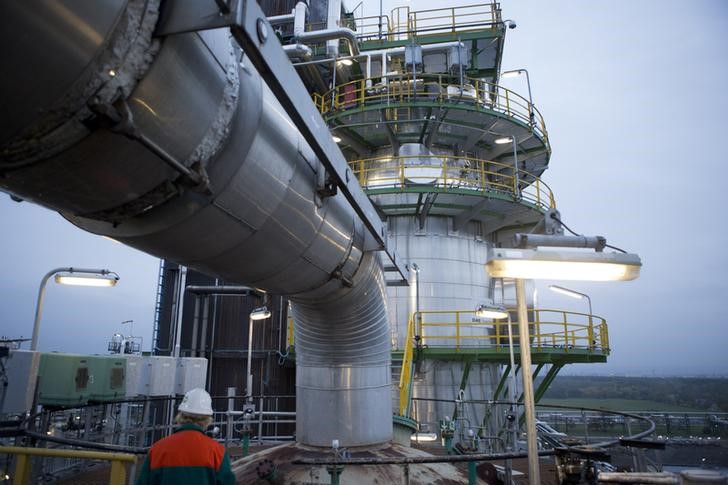Investing.com - Crude oil prices fell in Asia on Wednesday after industry figures from the U.S. showed an unexpected gain in crude stocks and investors looked to more from OPEC and allies on chances for output curbs to be extended until the end of 2018.
On the New York Mercantile Exchange crude futures for December delivery eased 0.11% to $52.41 a barrel, while on London's Intercontinental Exchange, Brent slipped 0.12% to $58.41 a barrel
Crude oil inventories in the U.S. rose by 519,000 barrels last week, the American Petroleum Institute (API) said on Tuesday, while gasoline supplies fell by 5.753 million barrels and distillate stocks dropped 4.949 million barrels.
The estimates will be to be followed on Wednesday by official data from the Energy Information Administration (EIA). The API and EIA figures often diverge.
Analysts expected a 2.5 million barrels drop in crude stocks and a 1.9 million barrels decrease in distillates and gasoline inventories off by 1.9 million barrels.
Overnight, crude oil prices settled higher on Tuesday as Saudi Arabia vowed to end the glut in supply while data expected to show crude oil supplies fell for the fifth-straight week lifted sentiment.
In what was a volatile day of trade, traders weighed the prospect of an extension to the supply-cut agreement after Saudi oil minister Khalid al-Falih said Saudi Arabia is willing to “do whatever it takes” to rein in excess supplies.
"When we get closer to that (five-year average) we will decide how we smoothly exit the current arrangement, maybe go to a different arrangement to keep supply and demand closely balanced so we don't have a return to higher inventories," the minister, Khalid al-Falih, told Reuters.
In May, Opec producers agreed to extend production cuts for a period of nine months until March, but stuck to production cuts of 1.2 million bpd agreed in November last year.
The ongoing fluctuation of output in Iraq, meanwhile, continued to concern investors as crude supplies through Iraq's northern pipeline to Ceyhan in Turkey rose further. Pumping along the pipeline rose to 300,000 barrels per day (bpd) on Tuesday, Reuters reported, citing a shipping source.
The uptick in political tensions in Northern Iraq follows conflict between Iraqi and Kurdish forces last week, as Kurdish forces retreated from Northern parts of Iraq, ceding control of two major oilfields.
